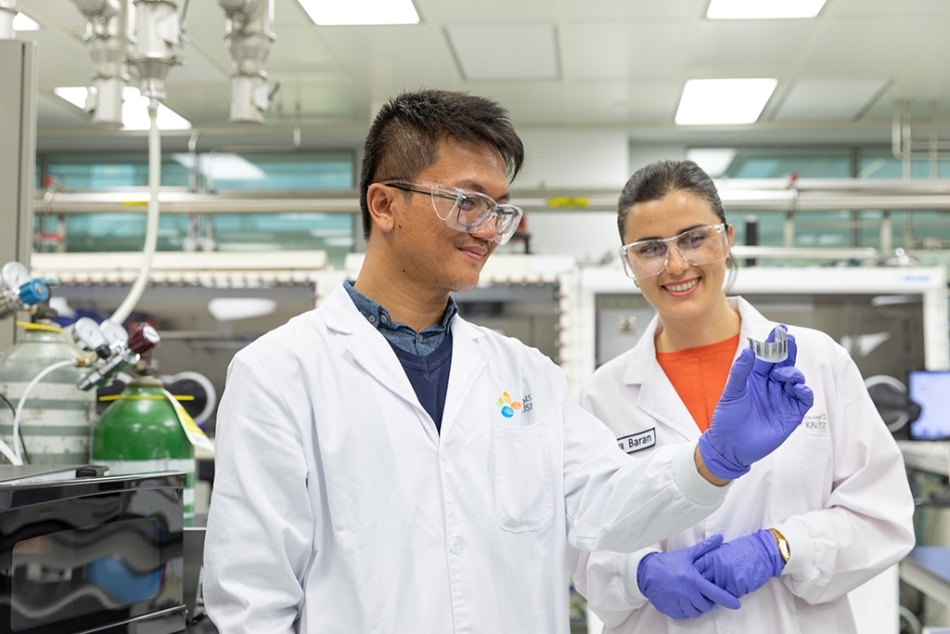Jun 28 2019
A low-cost nanomaterial created at KAUST could be used to recapture some of the enormous amounts of waste heat that devices and machines emit. This thermoelectric nanomaterial could capture the heat emitted by devices such as mobile phones and vehicle engines and convert it directly into useful electricity.
 Mohamad Nugraha (left) and his group leader, Derya Baran, demonstrate the flexibility of the device. (Image credit: © 2019 KAUST)
Mohamad Nugraha (left) and his group leader, Derya Baran, demonstrate the flexibility of the device. (Image credit: © 2019 KAUST)
Since the nanomaterial is synthesized by means of a low-temperature solution-based production method, it is appropriate for coating on flexible plastics that can be used almost anywhere.
“Among the many renewable energy sources, waste heat has not been widely considered,” stated Mohamad Nugraha, a postdoctoral researcher in Derya Baran’s lab. Waste heat liberated by devices and machines could be recaptured using thermoelectric materials. These materials have a propensity build up of an electric charge along the temperature gradient when one side of the material is hot and the other side is cold.
To date, thermoelectric materials have been produced using energy-intensive and costly methods. Baran, Nugraha, and their coworkers have created an innovative thermoelectric material formed by spin-coating a liquid solution of nanomaterials known as quantum dots.
The researchers spin-coated a thin lead-sulfide quantum dot layer on a surface and subsequently added a short linker ligand solution that crosslinks the quantum dots together to improve the electronic properties of the material.
Once the spin-coating process is repeated layer by layer to produce a 200-nm-thick film, the film is dried and fabrication is completed by gentle thermal annealing.
Thermoelectric research has focused on materials processed at very high temperatures, above 400 degrees Celsius.
Mohamad Nugraha, Postdoctoral Researcher, KAUST
The thermoelectric material, which is based on quantum dots, is heated by up to 175 °C. Such a lower processing temperature could reduce production costs and implies that it could be possible to form thermoelectric devices on a wide array of surfaces such as inexpensive flexible plastics.
The material developed by the team exhibited promising thermoelectric properties. A good thermoelectric material’s crucial parameter is the Seebeck coefficient, which is the amount of voltage produced upon applying a temperature gradient. “We found some key factors leading to the enhanced Seebeck coefficient in our materials,” stated Nugraha.
The researchers could also demonstrate that an effect known as the quantum confinement, which changes the electronic properties of a material upon being shrunk to the nanoscale, had a vital role in improving the Seebeck coefficient. According to Nugraha, the finding is a step toward practical low-temperature, high-performance, solution-processed thermoelectric generators.
Energy-harvesting nanomaterials created cool
A low-temperature method for enabling high-performance thermoelectric materials to recapture lost energy. (Video credit: © KAUST 2019)